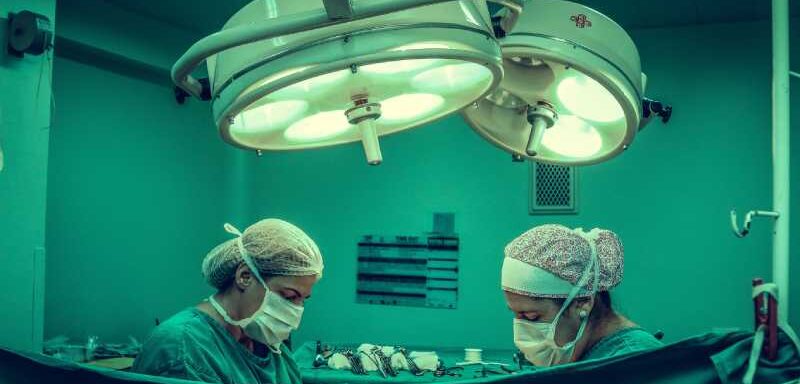diagnostic services pune chandan nagar, laparoscopic Gastric Banding Surgery, maternity hospital in chandan nagar kharadi
Laparoscopic Gallbladder Removal | Laparoscopic Cholecystectomy
March 16, 2023

If you’re considering laparoscopic gallbladder removal, now is the time to start talking to your surgeon. Read this guide first to learn what the surgery is, what to expect, and potential risks.
What is a laparoscopic gallbladder removal (cholecystectomy)?
A less invasive surgical procedure called laparoscopic cholecystectomy is used to remove the gallbladder. During the procedure, a small incision is made in the abdomen, and a laparoscope is inserted to provide a view of the surgical area. The surgeon then uses specialized instruments to remove the gallbladder, which is then extracted through the same small incision. Laparoscopic cholecystectomy is generally considered safer and less invasive than traditional open surgery and has a shorter recovery time
What is the gallbladder?
The gallbladder is a little, pear-shaped organ that is situated beneath the liver on the right-hand side of the belly. It stores and releases bile, a digestive fluid produced by the liver that helps to break down fats in the small intestine.
Who needs to have gallbladder removal?
People who experience symptoms such as abdominal pain, nausea, vomiting, or jaundice due to gallstones, gallbladder inflammation, or other conditions may need to have their gallbladder removed. In some cases, the removal of the gallbladder is recommended as a preventive measure for people at high risk of developing gallbladder disease, such as those with a family history of the condition.
How should I prepare for laparoscopic gallbladder removal?
To prepare for gallbladder removal, your doctor may recommend that you stop taking certain medications that can increase the risk of bleeding during surgery. You may also need to fast for a period of time before the procedure, and your doctor may recommend that you drink clear liquids to stay hydrated. It’s important to follow all of your doctor’s instructions carefully and ask any questions you have about the procedure or recovery process.
What happens during laparoscopic cholecystectomy?
During laparoscopic cholecystectomy, the patient is placed under general anesthesia. The surgeon makes several small incisions in the abdomen and inserts a laparoscope, a thin tube with a camera and light, to provide a view of the surgical area. Then, specialized instruments are inserted through the other incisions to remove the gallbladder. The surgeon may use electrocautery to cut and seal blood vessels and tissue during the procedure. Once the gallbladder is removed, the incisions are closed with sutures or staples. The patient is then monitored for a short period of time in a recovery room before being discharged from the hospital. Laparoscopic cholecystectomy typically takes one to two hours to complete.
What are the benefits of gallbladder removal?
Gallbladder removal can provide relief for those suffering from the symptoms of gallstones or inflammation, such as abdominal pain, nausea, and vomiting. It can also prevent future complications, such as infections or obstruction of the bile ducts. Additionally, the procedure is generally safe and has a relatively short recovery time, allowing patients to return to their normal activities soon after surgery.
What are the benefits of laparoscopic cholecystectomy?
Laparoscopic cholecystectomy offers several benefits over traditional open surgery, including smaller incisions, less pain and scarring, and a faster recovery time. It also has a lower risk of complications and a shorter hospital stay. Because the procedure is minimally invasive, it can often be performed on an outpatient basis, allowing patients to return home the same day as their surgery. Overall, laparoscopic cholecystectomy is a safe and effective option for the removal of the gallbladder.
What are the risks or possible complications of laparoscopic cholecystectomy?
While laparoscopic cholecystectomy is generally considered safe, like any surgical procedure, there are potential risks and complications. These may include bleeding, infection, damage to nearby organs, bile duct injury, and complications related to anesthesia. In rare cases, patients may experience postoperative complications such as blood clots or pneumonia.
It is important for patients to discuss the risks and benefits of the procedure with their surgeon and to carefully follow all pre-and post-operative instructions to reduce the risk of complications.
Most commonly performed general & laparoscopic procedures in our hospital:

- Ventral hernia
- Complex abdominal wall reconstruction
- Component separation
- Hemorrhoids
- Hernia, groin
- Laparoscopic Cholecystectomy
- Skin Cancer
- Skin Lesions/masses
- Skin infection
- Thyroid Surgery
- Breast surgery
Where to Seek Assistance?
Please seek the assistance of medical professionals providing Maternity and Child Care Hospital in Pune, If you require more information about laparoscopic gallbladder removal. As the best maternity hospital in Pune, Medipoint Hospital in Chandan Nagar is always one step ahead to keep its patients safe and secure.
Why choose Medipoint Hospital
Book an appointment today to take advantage of the services!

